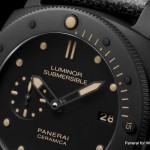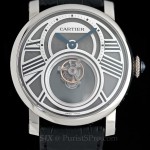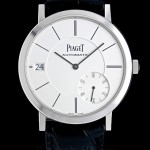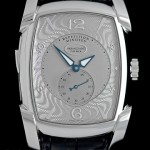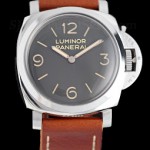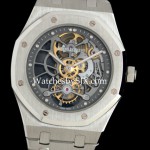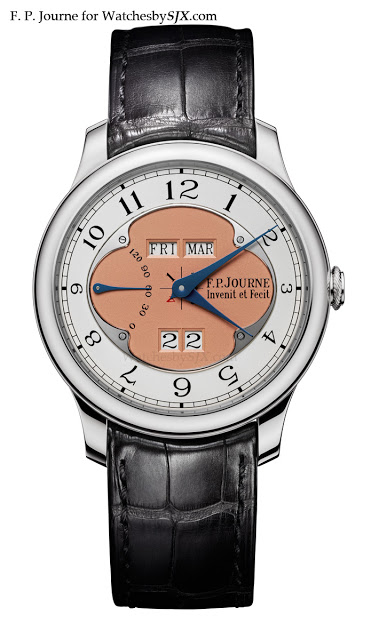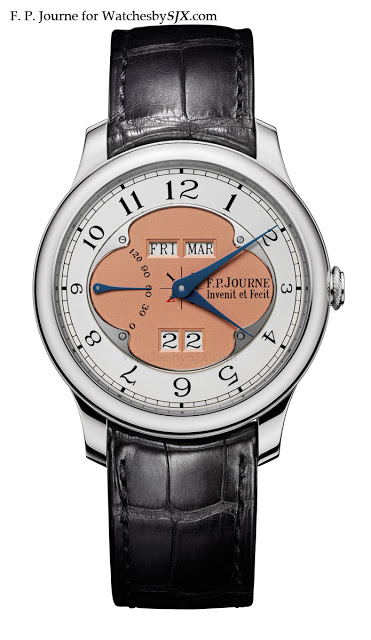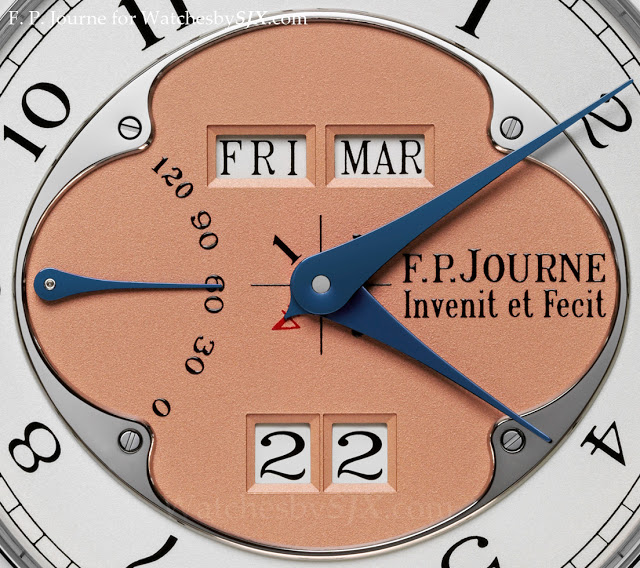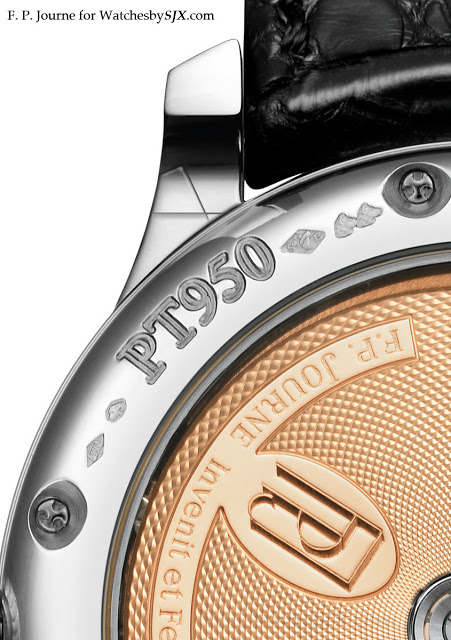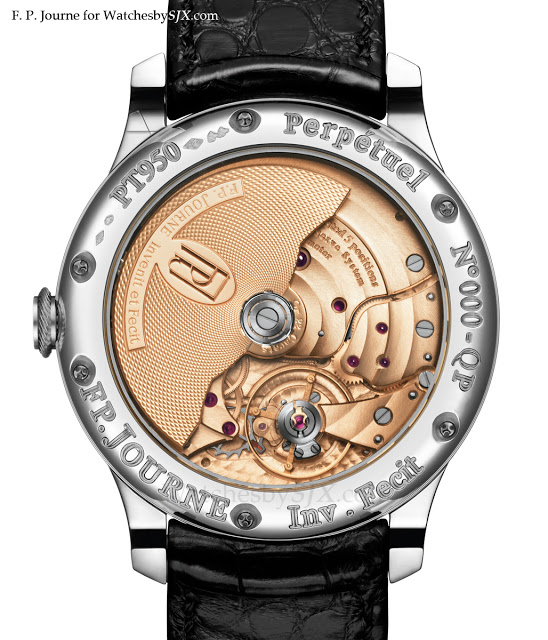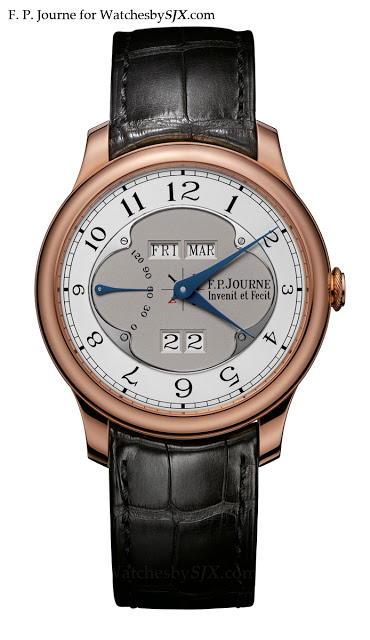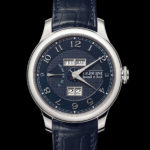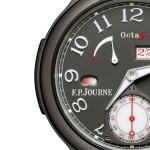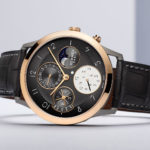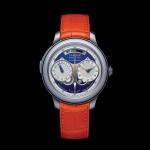SIHH 2013: Panerai (with live photos)
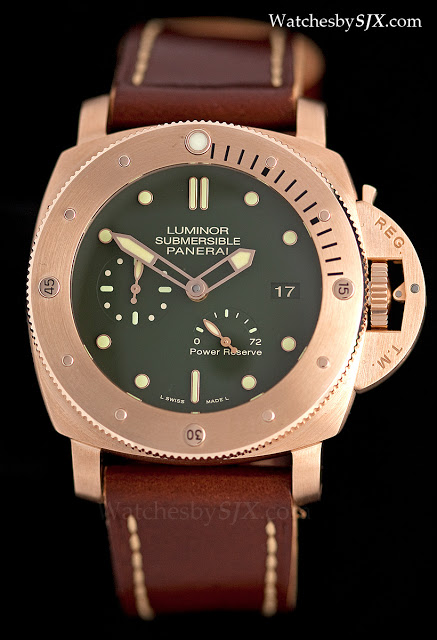
Panerai’s collection at SIHH 2013 can be easily summarised into three main themes: Submersibles, Radiomir 1940 and the new P.9100 chronograph calibre. The Submersible has been in the Panerai line-up since it was revived by Richemont in 1998, but it has never quite been as popular as its Luminor cousins. This year sees the addition of three new limited edition Submersible models, including a new Bronzo.
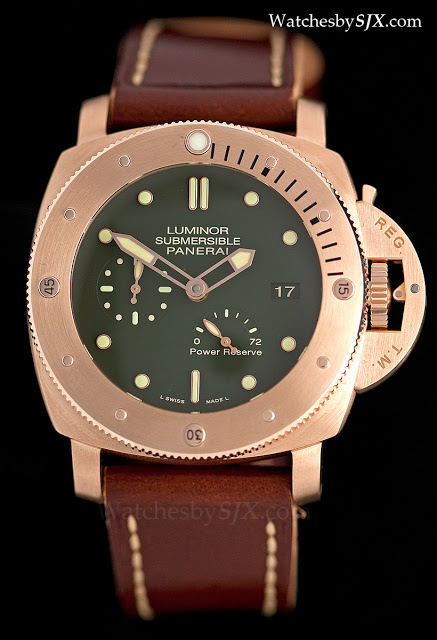 |
| Panerai Luminor Submersible 1950 3 Days Power Reserve Automatic Bronzo PAM507 |
Launched in 2011, the first PAM382 Bronzo was a big hit, so it is not surprising that Panerai has used the same bronze case once again. The new Luminor Submersible 1950 3 Days Power Reserve Automatic Bronzo PAM507 has the P.2002 power reserve indicator movement.
.jpg)
.jpg)
.jpg)
Besides the power reserve display, the PAM507 Bronzo also differs from its predecessor in that it has gold-filled lettering on the titanium case back. Otherwise it’s mostly the same, and will acquire a patina in the same manner. This too is limited to 1000 pieces.
.jpg)
.jpg)
The next new Submersible is the Luminor Submersible 1950 3 Days Automatic Ceramica PAM508. This is the first ceramic case Submersible, and like any other ceramic case Panerai, it looks good.
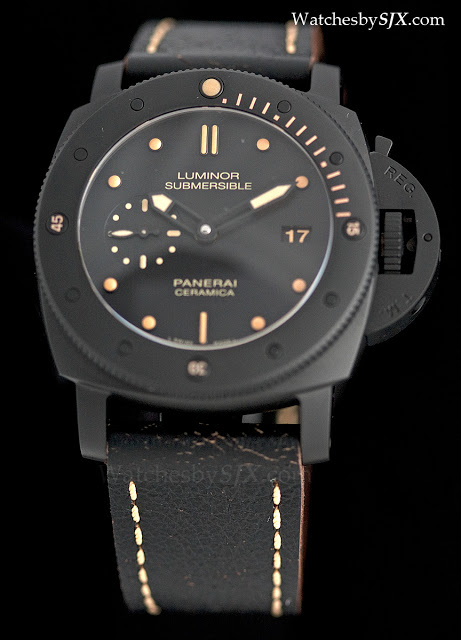
.jpg)
.jpg)
The parchment Luminova provides good contrast to the black case and bezel. And it is fitted to a distressed leather strap, the same material for the Panerai PAM372 strap, except in black. The PAM508 is limited to 1000 pieces.
.jpg)
.jpg)
And the last of the trio is the Luminor Submersible 1950 2500m 3 Days Automatic Titanio PAM364. Though the same 47 mm diameter as the other two Submersibles, the PAM364 is far chunkier. The sapphire crystal alone is 5.9 mm thick.
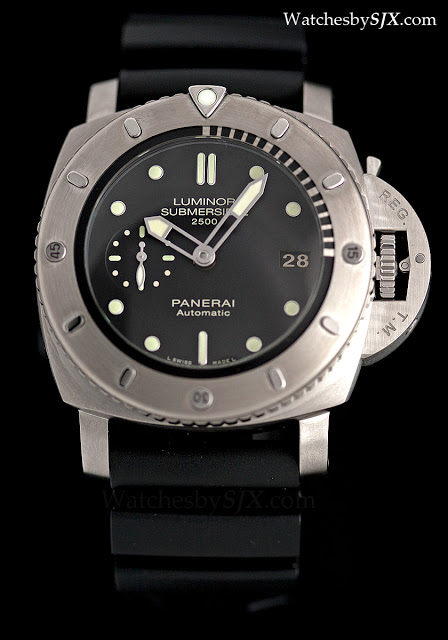
.jpg)
.jpg)
.jpg)
.jpg)
Despite its mass, the PAM364 is titanium so it is not exceptionally heavy, but it still feels appealingly massive.
.jpg)
Compared to the earlier 2500 m Submersible, the new PAM364 is more attractive, mainly due to the shorter baton markers on the rotating bezel. The PAM364 is limited to 500 pieces.
The second major theme of the Panerai collection is the Radiomir 1940 case. First seen last year, the Radiomir 1940 is a cross between the Luminor and Radiomir. That’s because it’ based on a transitional model when the Radiomir evolved into the Luminor.
Two Radiomir 1940 models are available, the first being the Radiomir 1940 3 Days. This has a 47 mm case and the P.3000 hand-wind calibre with date function. It is available in steel or rose gold, the PAM514 and PAM515 respectively.
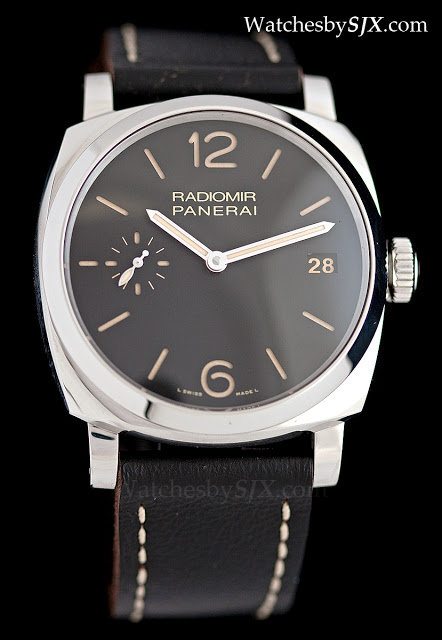
.jpg)
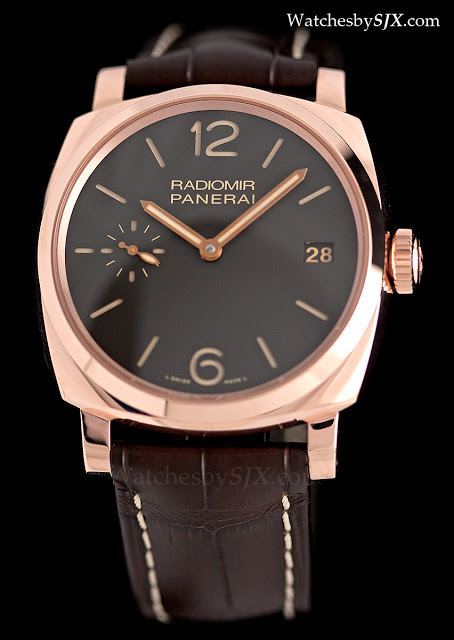
.jpg)
.jpg)
.jpg)
The other is the Radiomir 1940 in a 42 mm case with the P.999 calibre (which borrows a Piaget gear train). Likewise available in steel or rose gold, PAM512 and PAM513, this 42 mm Radiomir 1940 looks and feels like a dress watch. However, the chunkier lugs make it seem a bit more sporty than the 42 mm Radiomir with wire lugs.
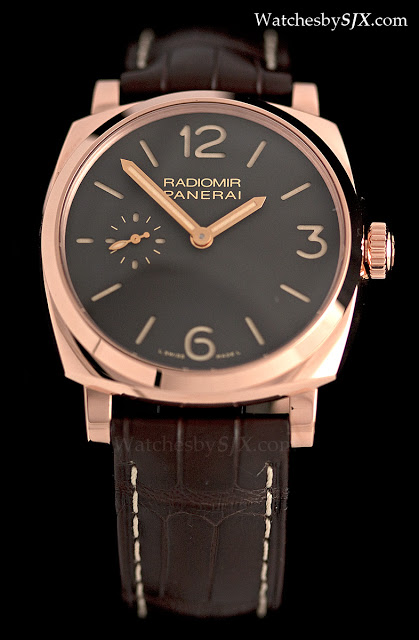
.jpg)
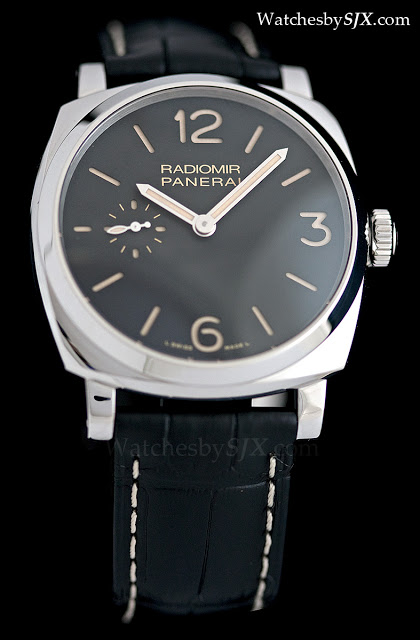
.jpg)
The sole new calibre Panerai presented this year is the P.9100 chronograph movement. Like most other modern, mid- to high-end chronograph calibres, the P.9100 has a column wheel and vertical clutch. In addition, it has a flyback mechanism and Magic Lever winding (which is favoured by Richemont brands for mid-range automatic calibres).
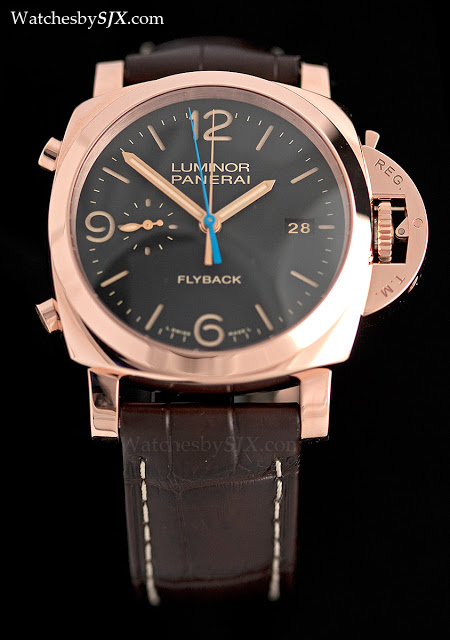
More interesting than the technical characteristics is the chronograph layout. Panerai did a great job in retaining the traditional Panerai aesthetic as much as possible, something it failed at with all previous Panerai chronographs.
.jpg)
The P.9100 has its minute and seconds counters co-axial with the hands in the centre, leaving the dial clutter-free. At the traditional location of nine o’clock is the constant seconds. And then there’s the date window at three.
Two watches with the P.9100 movement are available, the steel chronograph PAM524 and in rose gold as the PAM525.
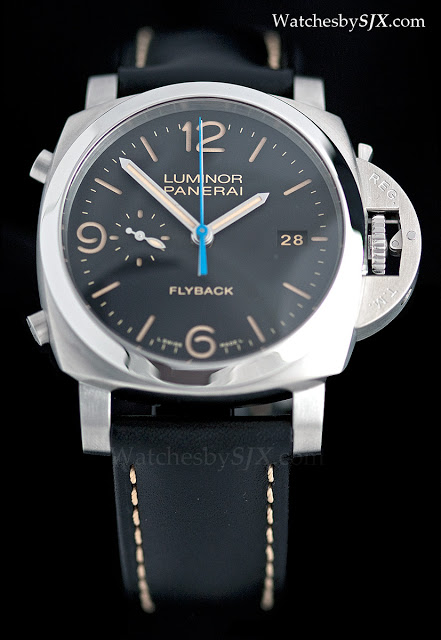
A more elaborate version of the calibre, the P.9100/R, is found in the Luminor 1950 Regatta 3 Days Chrono Flyback Titanio PAM526. In addition to the functions of the basic P.9100, the Regatta chronograph has an hour counter at three o’clock as well as a regatta countdown function.
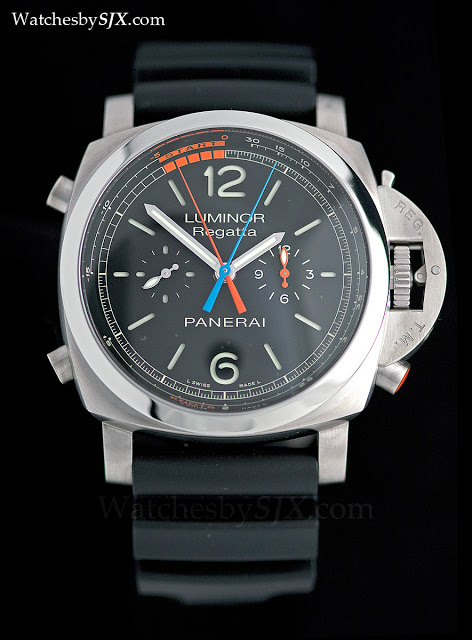
.jpg)
The countdown function is activated by the button at four o’clock, with the minute hand moving backwards by one minute with each push of the button, for up to five minutes. Like the other chronograph functions the countdown is controlled by the single column wheel in the movement, except here it is taller than usual so that the countdown lever, which is mounted on an additional plate on the back of the movement, can engage the upper part of the column wheel.
.jpg)
.jpg)
And the final new model for SIHH 2013 doesn’t fit into any of the main themes. The Pocket Watch Tourbillon GMT Ceramica PAM446 uses the same P.2005/S skeleton tourbillon movement as in the Radiomir skeleton tourbillon of a few years ago.
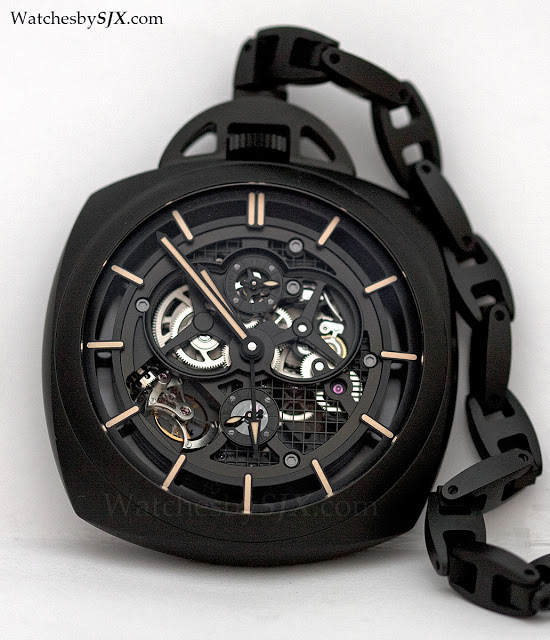
.jpg)
.jpg)
.jpg)
Now the P.2005/S is in a 59 mm ceramic case with matching ceramic chain. The movement is suspended in the centre of the case, surrounded by an open work chapter ring with the 12 elongated hour markers. This is somewhat reminiscent of the Cartier grand complication pocket watch of 2012. Only 50 of these will be made.
.jpg)
See the rest of my SIHH 2013 comprehensive reports. The brand reports listed in italics are still in progress. A. Lange & Söhne Audemars Piguet Cartier Greubel Forsey IWC Jaeger-LeCoultre Montblanc Panerai Parmigiani Piaget Richard Mille Roger Dubuis Vacheron Constantin Van Cleef & Arpels – SJX
Back to top.
